The 4 Main Types Of Music Instruments Explained By Pros
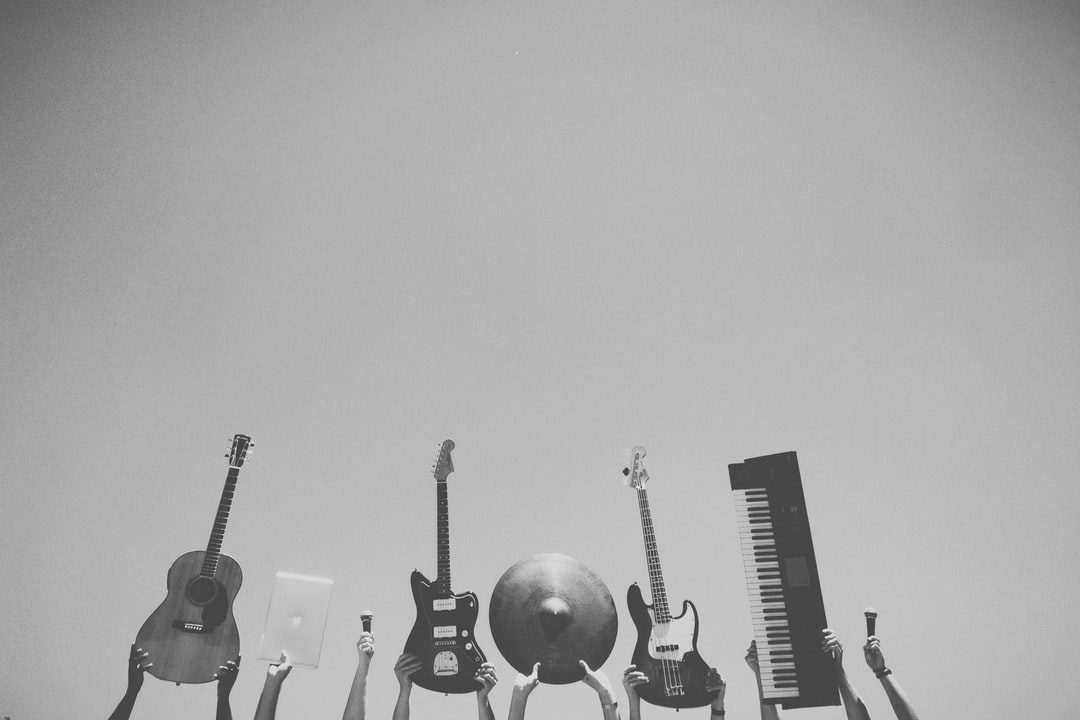
*This article may contain links to affiliate products & services. We have reviewed these services to try and ensure the highest quality recommendations*
Written by Ramsey Brown.
Most popular musical instruments that we hear and recognize today can be classified into 4 different categories. If you are interested in learning an instrument, no matter which one it may be, it is always beneficial to familiarize yourself with all of the different types.
If you are just starting out your music career, you will find this various information useful and informative. Through learning about each different instrument category and the sounds they produce, you may decide to pick up and learn one that you hadn’t previously considered.
It is also a well known fact that as a performing musician or orchestra member, the more instruments you know how to play, the further you can advance in your career. Many people think that it is too late to learn a new musical skill or that they are too old to pick up a new instrument to play, but I'm here to tell you that this is not true. If you’ve ever dreamed of learning to play piano, guitar, drums, or anything else, there is no better time than now to begin!
Throughout this article, we are going to discuss the four main types of musical instruments and provide information as to what classifies each particular one. Whether you are interested in learning to play something new or you are yearning to gain more musical knowledge in general, keep reading to understand more about the depths of these instruments and the study behind them.
4 Types of Music Instruments: Explained
You know there’s many different types of musical instruments, but do you know what exactly classifies each of them? It’s not something that is commonly discussed in the music industry, but it is valuable knowledge to have if you are considering pursuing a career as a performing musician. Musical instruments are typically defined by the sounds they produce and can be put into four main categories as represented in an orchestra:
Woodwind
Brass
Stringed
Percussion
1. Woodwind Instrument
As the name implies, woodwind instruments have a mouthpiece at one end containing a single or double strip of thin wood, known as a reed. This vibrates when air is blown across, which causes the sound to come out the other end. All woodwinds require the use of the mouth and blowing air into the instrument, which then splits the air into different holes that produce different sounds, depending on the instrument. The different sounds and frequencies are controlled by running your fingers along the holes located along the top of the instrument
Despite the name, a woodwind may be made of any material, not just wood. Common examples include brass, silver, cane, as well as other metals such as gold and platinum. For example, a saxophone is made of brass but is considered a woodwind because it requires a reed to produce sound. The most common examples of woodwind instruments are flutes, clarinet, bassoon, piccolo, recorder, and harmonica.
Woodwind instruments have to be learned through practice and lessons just like any other instrument. However, they are known to be one of the easier types of instruments to learn so it shouldn’t take fairly long to start catching on after first starting. Recorders and harmonicas are extremely popular instruments in the woodwind category, as they are both inexpensive to buy and very simple to learn. It is important to have your own woodwind instrument for hygiene reasons, so we do recommend purchasing your own if you decide you want to begin practicing.
Benefits of Playing the Woodwind Instrument:
You can learn to play a woodwind instrument quite early, often from the age of 5 years.
It will strengthen your breathing and increase your lung capacity
It actually strengthens posture, and can even exercise your abdominal muscles as you have to engage them to play the instrument longer.
It will aid confidence levels, and if you join an orchestra you will be required to work under pressure.
Boosts hand-eye coordination.
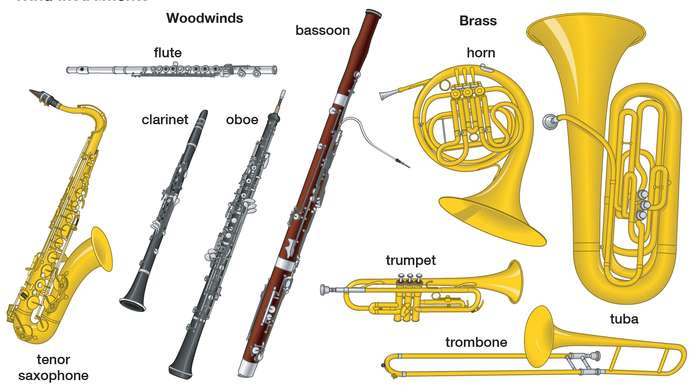
2. Brass Instrument
Brass instruments are similar to wind instruments with a few distinct differences that set them apart. The main difference obviously being that they are made of brass and that they are also long and hollow resembling a pipe. They work by blowing into the mouthpiece, and most have valves to be pressed down creating musical notes. At the end is a bell-shaped opening through which sounds are produced. These are not suitable instruments for a small child to play because of their larger size and need for strong air flow. They are one of the harder types of instruments to learn to play and are typically seen in jazz ensembles.
One of the attractive features of brass instruments is the decibel of sound that they produce and the fact that they can be played louder than any other instrument. For this reason, brass instruments can be heard from far away. Brass instruments include french horns, trombones, and trumpets that are various shapes to make them easier to play. Once again you will see them as part of the orchestra, so expose yourself to live performances or symphony orchestras to get used to seeing the orchestra in action.
Benefits of Playing Brass Instruments:
It will develop confidence and breath control
Strengthens core muscles, and helps to control breathing.
Increases hand-eye coordination, strengthening the neural pathways.
Makes you mentally stronger
If you work in an orchestra, it teaches you to get along with others.
Acts as a stress release
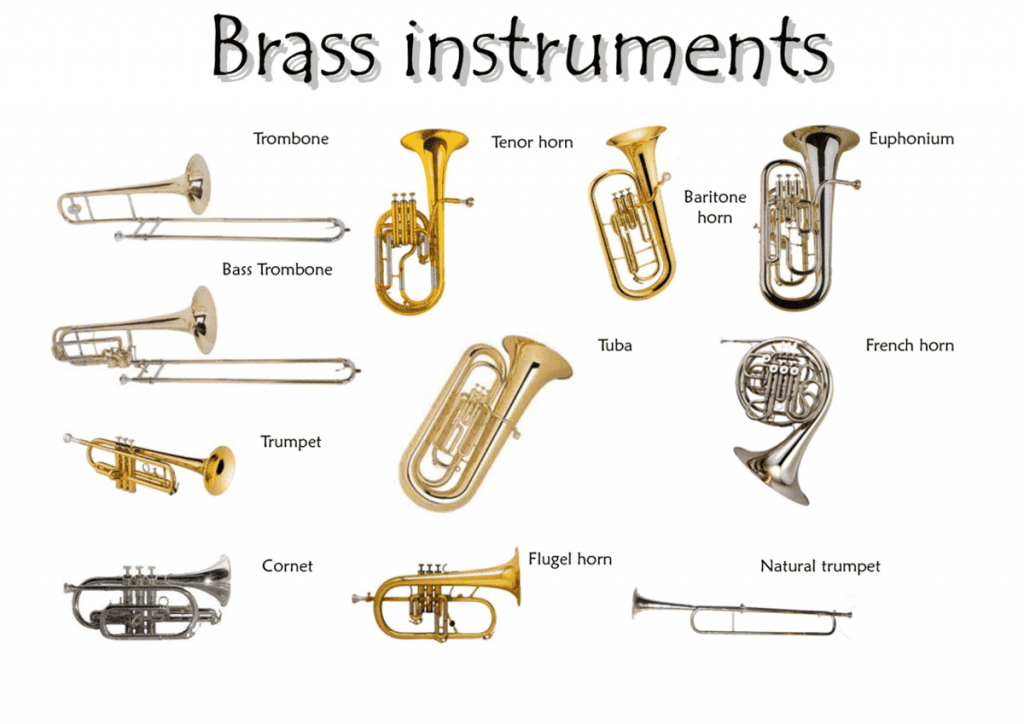
3. Stringed Instrument
Instruments that fall into the string category consist of a set of strings that vibrate to produce sound and various pitches when they are pulled, hit, rubbed, or rubbed with a bow. The pitch of the sound produced via these instruments is highly dependent on the length of the air column inside the instrument. The pitch also significantly depends upon the thickness of the strings used in the instrument.
Some examples of string instruments include the guitar, violin, mandolin, cello, harp, banjo, and double bass. The guitar is the most commonly known out of all the string instruments and is more straightforward to learn and play than other instruments in this category. This is what makes it a great option for children to begin learning.
Benefits of Playing Stringed Instruments:
Learning a stringed instrument is supposed to improve your problem-solving skills and mathematical abilities.
Establishes a positive learning environment.
Helps with focus and concentration.
Enhances imagination.
Creates a multi-sensory learning experience.
Acts as a tension release.
Can alter mood and change attitudes to learning.
Can enhance cognitive recovery following a stroke.
You can learn the smaller instruments at a young age.
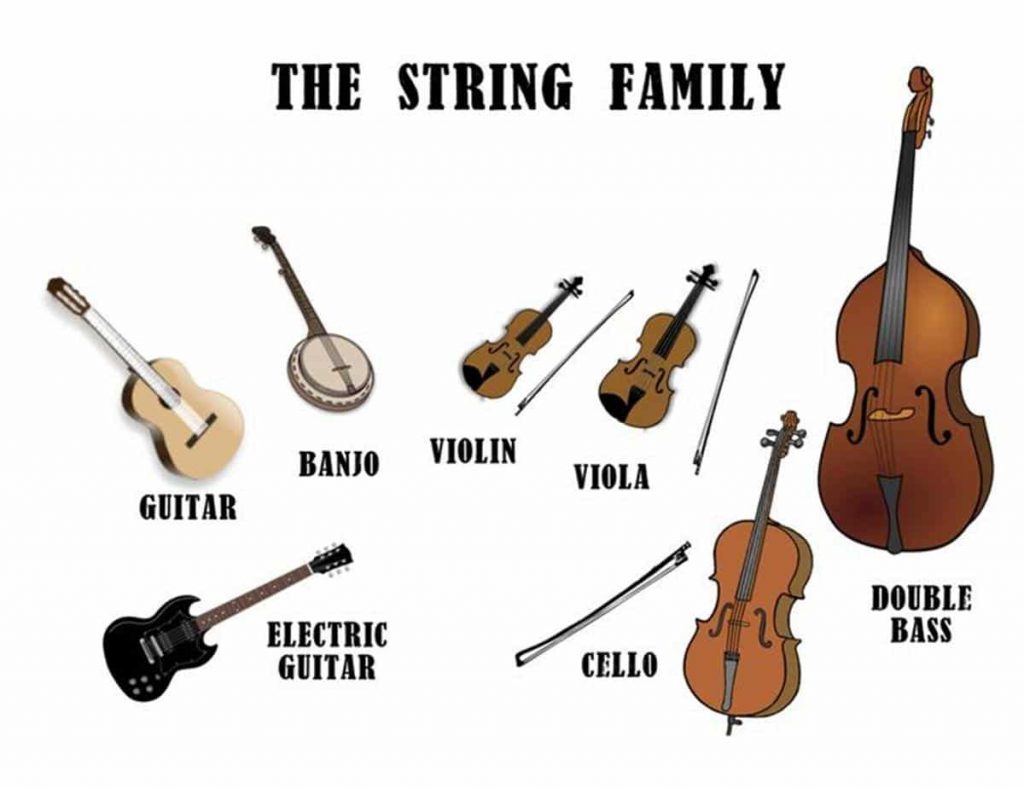
4. Percussion Instrument
Percussion instruments are a wide-ranging category of instruments that produce a noise when they are hit, shaken, rattled, or scraped with a hand, stick, or similar instrument. These instruments include drums, cymbals, maracas, xylophones, triangle, tambourine, and many others.
Percussion instruments are broadly divided into 2 subclasses which include pitched percussion instruments and unpitched percussion instruments. Pitched percussion instruments are instruments that produce notes with an identifiable pitch. On the other hand, unpitched percussion instruments are the ones that produce notes with a pitch that is not identifiable. The pitch of sounds produced by such instruments is indefinite.
Interestingly, pianos are classified as percussion instruments but there is some controversy behind this. The piano is played by pressing its 88 black and white keys, which puts it in the percussion family. However, on pressing the keys, a hammer is lifted inside the piano that strikes the strings which point to it belonging to the string family. Percussion instruments are mainly used to keep rhythms in rhythm. These instruments can be a bit difficult to learn for those just starting out, as it takes a lot of experience and practice to be able to hit the instrument with the right amount of intensity for a given tone. These instruments are widely used and quite popular due to the melodic sounds that they produce.
Benefits of Percussion Instruments:
Playing the drums is energetic and can be classified as exercise.
Will improve coordination and motor skills.
Will improve manual dexterity.
Can be a stress release.
Promotes social interaction with others.
Enables self-expression.
May lead to a career choice.
Increases brain development.
Therapeutic for low mood.
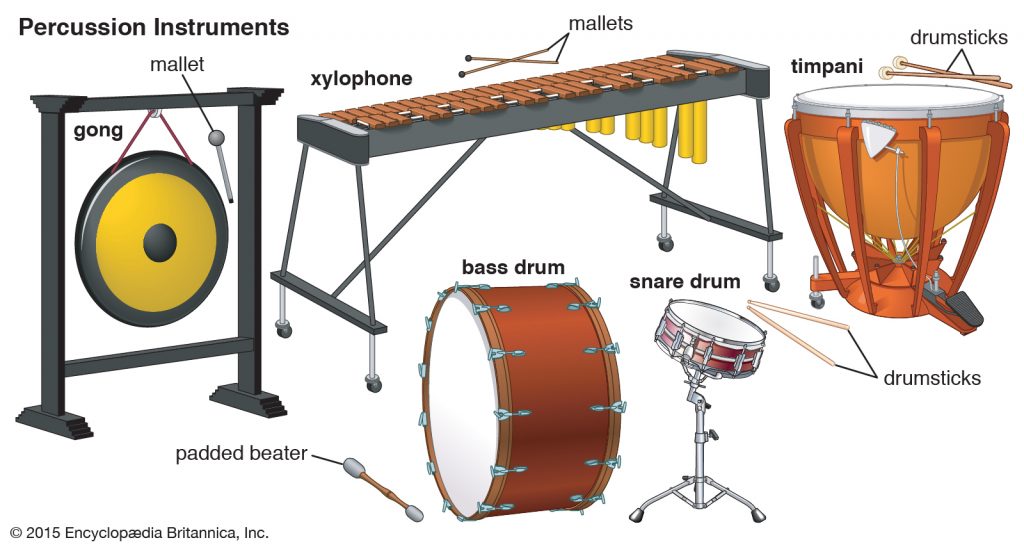
Wrapping Up
It is so important to encourage young people to take up music and begin learning musical instruments at an early age. There are numerous studies that prove learning to play an instrument has many life enhancing benefits such as increasing cognitive ability, reducing stress, improving social interaction, math and language skills, plus so much more.
This goes for older people too. It is never too late to learn a new skill or instrument, in fact it is even said to help with aging brains and a great hobby for the elderly to prevent cognitive decline. We hope that this article gave you a better insight of the different types of instruments and the category that each falls into.
When your song is ready to go, it's time to start promoting it to potential fans! Omari has the best organic promotion services money can buy. With packages for Spotify, TikTok, Instagram, and YouTube, we will get your music the traffic and attention it deserves! Click below for more information.
SPEAK YOUR MIND
Leave a Reply
How This INDIE Artist Got Over 67,598,275 Streams On ONE Song
Join the No-Nonsense Music Marketing Newsletter to get the most valuable weekly case studies and strategies to grow your music business!




2 replies to "The 4 Main Types Of Music Instruments Explained By Pros"
Wear is the sacsaphone
.
BETA BETA DIS WORK IS GUD